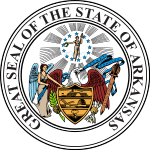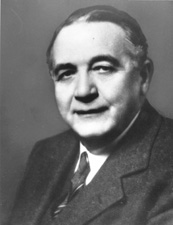
John Holmes Overton Sr., was an attorney and Democratic US Representative and US Senator from Louisiana. His nephew, Thomas Overton Brooks, was also a US representative, from the Shreveport-based 4th district of Louisiana.

Hattie Ophelia Wyatt Caraway was an American politician who became the first woman elected to serve a full term as a United States Senator. Caraway represented Arkansas. She was the first woman to preside over the Senate. She won reelection to a full term in 1932 with the active support of fellow Senator Huey Long, of neighboring Louisiana.

Blanche Lambert Lincoln is an American politician who served as a United States Senator from Arkansas from 1999 to 2011. A member of the Democratic Party, she was first elected to the Senate in 1998; she was the first woman elected to the Senate from Arkansas since Hattie Caraway in 1932 and youngest woman ever elected to the Senate at age 38. She previously served in the U.S. House of Representatives, representing Arkansas's 1st congressional district from 1993 to 1997.

The 72nd United States Congress was a meeting of the legislative branch of the United States federal government, consisting of the United States Senate and the United States House of Representatives. It met in Washington, D.C. from March 4, 1931, to March 4, 1933, during the last two years of Herbert Hoover's presidency. The apportionment of seats in this House of Representatives was based on the 1910 United States census. The Senate had a Republican majority. The House started with a very slim Republican majority, but by the time it first met in December 1931, the Democrats had gained a majority through special elections.
This article covers the history of women in the United States Senate and various milestones achieved by female senators. It includes a list of all women who have served in the Senate, a list of current female senators, and a list of states represented by women in the Senate. The first female U.S. senator, Rebecca Latimer Felton, represented Georgia for a single day in 1922, and the first woman elected to the Senate, Hattie Caraway, was elected from Arkansas in 1932. Sixty women have served in the upper house of the United States Congress since its establishment in 1789. As of October 3, 2023, there are 25 women serving as U.S. senators. Additionally, Kamala Harris as vice president serves as President of the Senate.

The 1960 United States Senate elections coincided with the election of John F. Kennedy as president on November 8, 1960. The 33 seats of Class 2 were contested in regular elections. A special election was also held on June 28, 1960, for a mid-term vacancy in North Dakota where Democrats flipped a seat to expand their majority to 66–34. As Majority Leader Lyndon Johnson was elected Vice President, Mike Mansfield became the new majority leader.

The 1932 United States Senate elections coincided with Democrat Franklin D. Roosevelt's landslide victory over incumbent Herbert Hoover in the presidential election. The 32 seats of Class 3 were contested in regular elections, and special elections were held to fill vacancies.

The 1930 United States Senate elections occurred in the middle of Republican President Herbert Hoover's term. The 32 seats of Class 2 were contested in regular elections, and special elections were held to fill vacancies. With the Great Depression beginning to take hold, Republican incumbents became unpopular, and Democrats picked up a net of eight seats, erasing the Republican gains from the previous election cycle, however, Republicans retained control of the chamber. This was the first of four consecutive Senate elections during the Depression in which Democrats made enormous gains, achieving a cumulative pick-up of 34 seats.
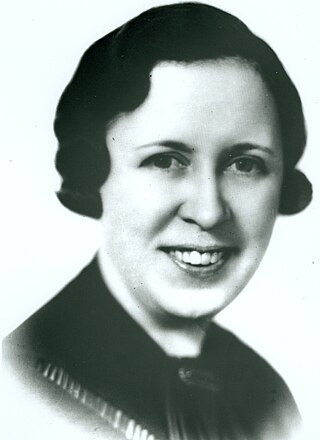
Rose McConnell Long was an American politician who served as a U.S. senator from Louisiana, succeeding her late husband Huey Long. She was the third woman to serve as a U.S. senator, and the first from Louisiana.
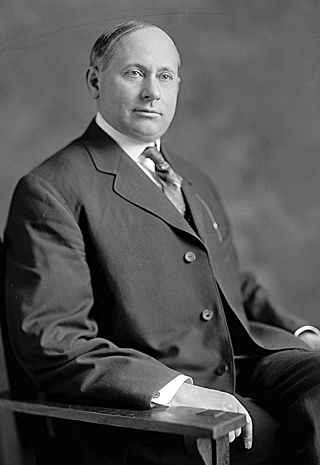
Thaddeus Horatius Caraway was a Democratic Party politician from the US state of Arkansas who represented the state first in the US House of Representatives from 1913 to 1921 and then in the US Senate from 1921 until his death.

The 1948 United States Senate election in Maine was held on September 13, 1948. Incumbent Republican U.S. Senator and Senate Majority Leader Wallace White did not seek a fourth term in office.
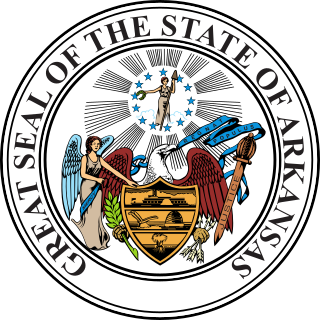
The 1938 United States Senate election in Arkansas took place on November 8, 1938. Incumbent Senator Hattie Caraway ran for a second term in office. After narrowly defeating U.S. Representative John Little McClellan in the Democratic primary, she easily won the general election over Republican C.D. Atkinson.

The 1944 United States Senate election in Arkansas took place on November 7, 1944. Incumbent Senator Hattie Caraway ran for a third term in office, but was eliminated in the Democratic primary. U.S. Representative J. William Fulbright defeated Governor Homer Martin Adkins in the Democratic runoff.
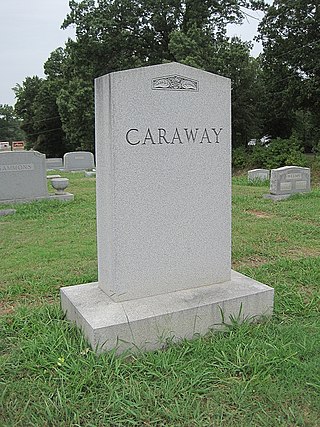
The US Sen. Hattie Caraway Gravesite is located in Oaklawn Cemetery on the west side of Jonesboro, Arkansas. It is the only surviving site in Arkansas associated with the life of Hattie Caraway (1878–1950), the first woman to be elected to a full term in the United States Senate. The gravesite consists of a family headstone, simply engraved "Caraway", and three footstones: one for the senator, one for her husband Thaddeus, whom she succeeded in the Senate, and their son Robert. The site is located on the western central edge of the cemetery.

The 1950 United States Senate election in Louisiana was held on November 7, 1950. Incumbent Democratic U.S. Senator Russell B. Long won re-election to a second term.

The 1930 United States Senate election in Illinois took place on November 4, 1930.

The 1936 United States Senate special election in Louisiana took place on April 21, 1936, to fill the remainder of the late former Senator Huey Long's six-year term. Long was first elected to the Senate in 1930 and was assassinated on September 10, 1935.

Arkansas held a general election on November 8, 1932. At the top of the ticket, Franklin D. Roosevelt won the state handily in his successful bid to become the 32nd President of the United States. Arkansans elected Hattie Caraway to the United States Senate, the first woman elected to a full term in history. For the United States House of Representatives, Bill Cravens, a former Representative from 1907 to 1913, returned to politics and defeated a wide field in the Arkansas 4th. Tilman Parks defeated several challengers to retain the Arkansas 7th. All of Arkansas's statewide constitutional offices were up for reelection, including governor. Incumbent Harvey Parnell declined to run for reelection, and was supplanted by Junius Marion Futrell.

The 1944 Arkansas gubernatorial election was held on November 7, 1944.
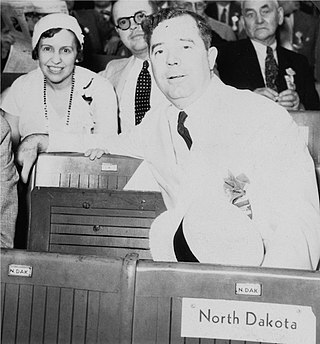
Huey Long, the former governor of Louisiana, served in the United States Senate from 1932 until his assassination in 1935. A powerful figure, Long was integral in Franklin Roosevelt's 1932 Democratic Nomination and the election of the first woman, Hattie Caraway, to the US Senate. He was investigated for election discrepancies regarding the election of his friend John H. Overton, but no evidence of fraud was found. He proposed sweeping legislation, known as the Share Our Wealth plan, to end the Great Depression. Long often used filibusters to prevent or slow the passage of New Deal legislation.

